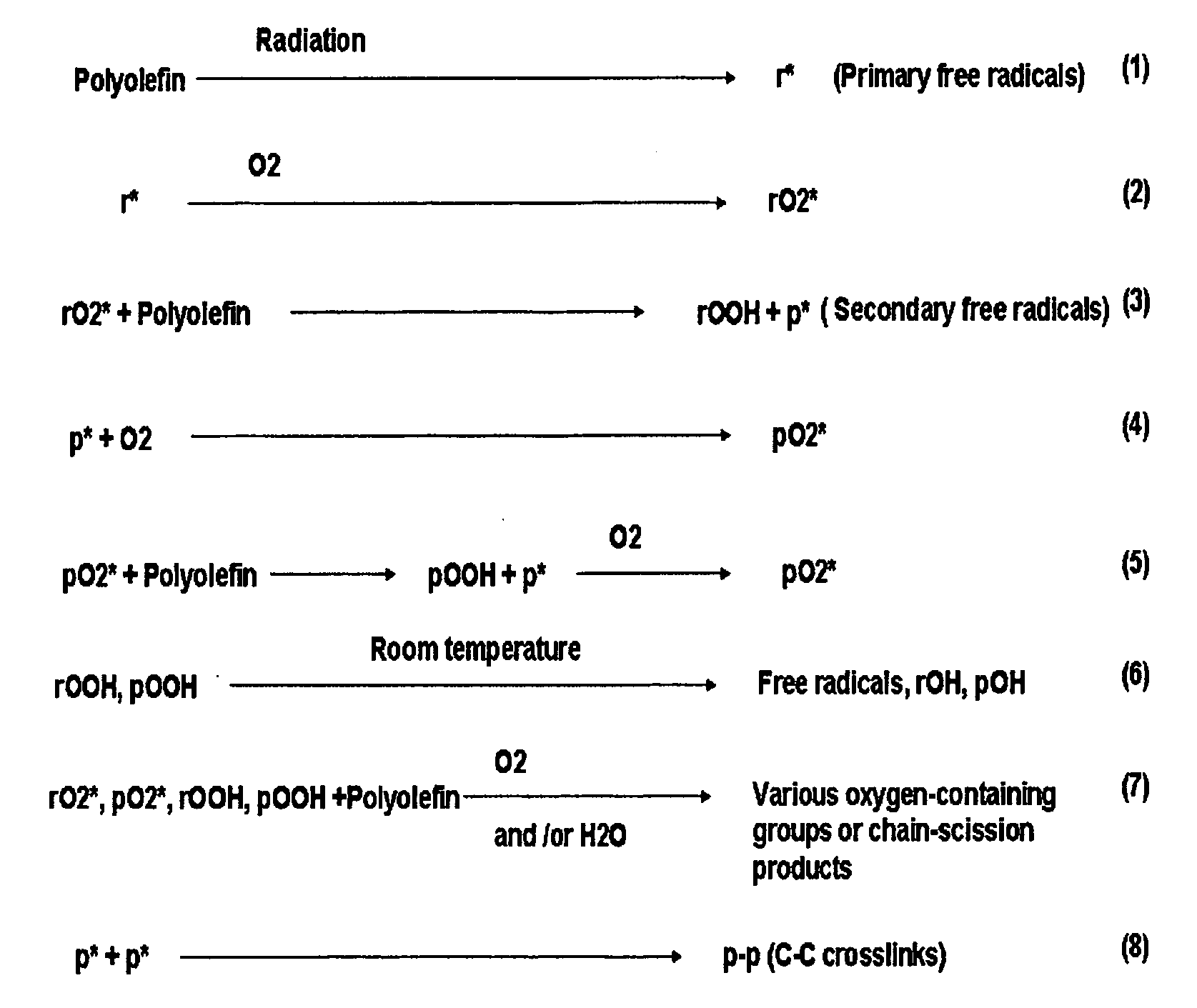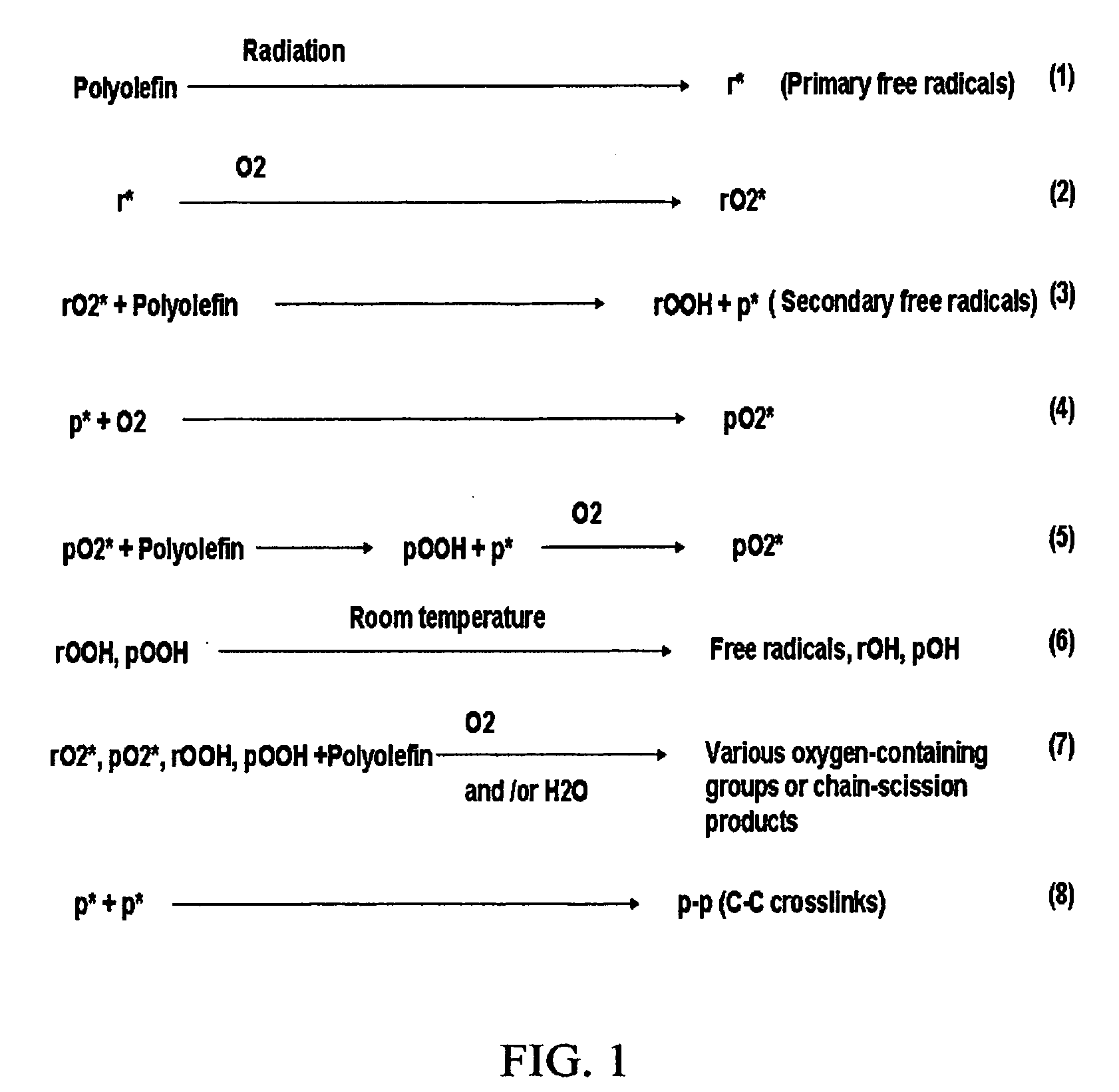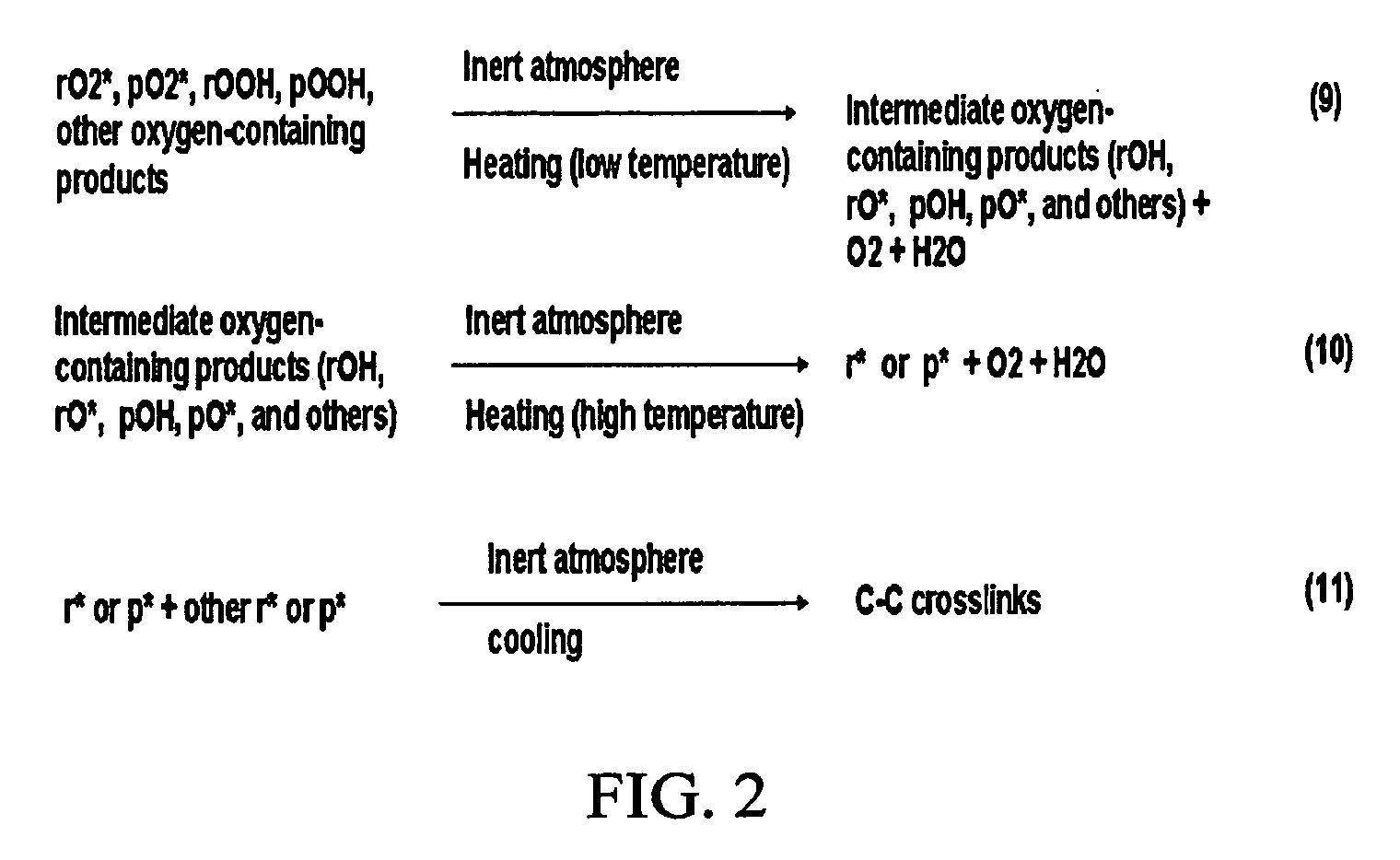Method for thermal crosslinking of previously irradiated polymeric material and medical implant
a polymeric material and thermal crosslinking technology, applied in domestic applications, other domestic articles, domestic articles, etc., can solve the problems of adverse effects of oxidation, method of eliminating oxidation or restoring material properties, and patents that do not teach methods to remove existing oxidation from materials, etc., to achieve superior oxidation resistance, improve mechanical properties, and enhance crosslinking
- Summary
- Abstract
- Description
- Claims
- Application Information
AI Technical Summary
Benefits of technology
Problems solved by technology
Method used
Image
Examples
example 1
Effect of Elimination of Oxidation and Thermal Crosslinking (Visual Effect and DSC Thermal Analysis)
Objective
[0062]This example demonstrates the method of oxidation elimination and thermal crosslinking and investigates the effect on both material appearance and thermal / molecular properties.
Material and Method
[0063]An orthopedic tibial (knee) insert made of a ram extruded surgical grade UHMWPE was gamma irradiated at about 150 KGY in air and shelf aged in room air for 7 years.
[0064]The tibial insert was cut into two halves to reveal its interior. One of the two sections was chosen for the experiment. A photo picture was taken before treatment. A small piece of the material (about 10 mg in weight) was removed from the section and analyzed by DSC (differential scanning calorimetry) for melting characteristics.
[0065]Heating rate was set at 10 degree C. / min. Afterwards, the same section was treated with the following steps:
[0066](1) The insert was placed in a heating oven flushed continu...
example 2
Effect of Oxidation Elimination and Thermal Crosslinking (Tensile Test)
Objective
[0074]This example demonstrates the method of oxidation elimination and thermal crosslinking. It also investigates the effect on tensile property.
Material and Method
[0075]A compression molded slab of surgical grade 1020 UHMWPE was gamma irradiated at about 50 KGY in air and shelf aged in room air for 13 months. A section of the slab was taken for tensile tests (before thermal treatment). Another section was treated with the following steps:
[0076](1) The section was placed in a heating oven with continuously vacuum suction.
[0077](2) The oven temperature was raised to 270 degree C. and held for 120 minutes.
[0078](3) The oven temperature was cooled at about 1 degree C. / min to room temperature.
[0079](4) The section was taken out of oven.
[0080]After the treatment, the section was used for tensile tests (after thermal treatment). A universal testing machine (Instron, Model 4468) was employed to conduct tensile...
example 3
Tensile Tests for Thermally Crosslinked UHMPWE
Objective
[0084]This example investigates tensile property for various thermally crosslinked UHMWPE.
Material and Method
[0085]A universal testing machine (Instron, Model 4468) was employed to conduct tensile tests. Sample preparation and test procedures followed ASTM D638. Type-IV specimen configuration at thickness of 1-mm (six specimens per sample) was used. The crosshead speed was set at 2-inch per minute. Five samples were tested with their preparation methods described below:
[0086]Sample A: Control. Virgin polymer of a surgical grade 1050 UHMWPE compression molded
[0087]Sample B: Physical crosslinking via thermal crosslinking. Using Sample A as the starting material, it was thermally crosslinked with the following steps:
[0088](1) The sample was placed in a heating oven with continuously vacuum suction.
[0089](2) The oven temperature was raised to 250 degree C. and held for 150 minutes.
[0090](3) The oven temperature was cooled at about 1...
PUM
| Property | Measurement | Unit |
|---|---|---|
| Length | aaaaa | aaaaa |
| Fraction | aaaaa | aaaaa |
| Time | aaaaa | aaaaa |
Abstract
Description
Claims
Application Information
 Login to View More
Login to View More - R&D
- Intellectual Property
- Life Sciences
- Materials
- Tech Scout
- Unparalleled Data Quality
- Higher Quality Content
- 60% Fewer Hallucinations
Browse by: Latest US Patents, China's latest patents, Technical Efficacy Thesaurus, Application Domain, Technology Topic, Popular Technical Reports.
© 2025 PatSnap. All rights reserved.Legal|Privacy policy|Modern Slavery Act Transparency Statement|Sitemap|About US| Contact US: help@patsnap.com



